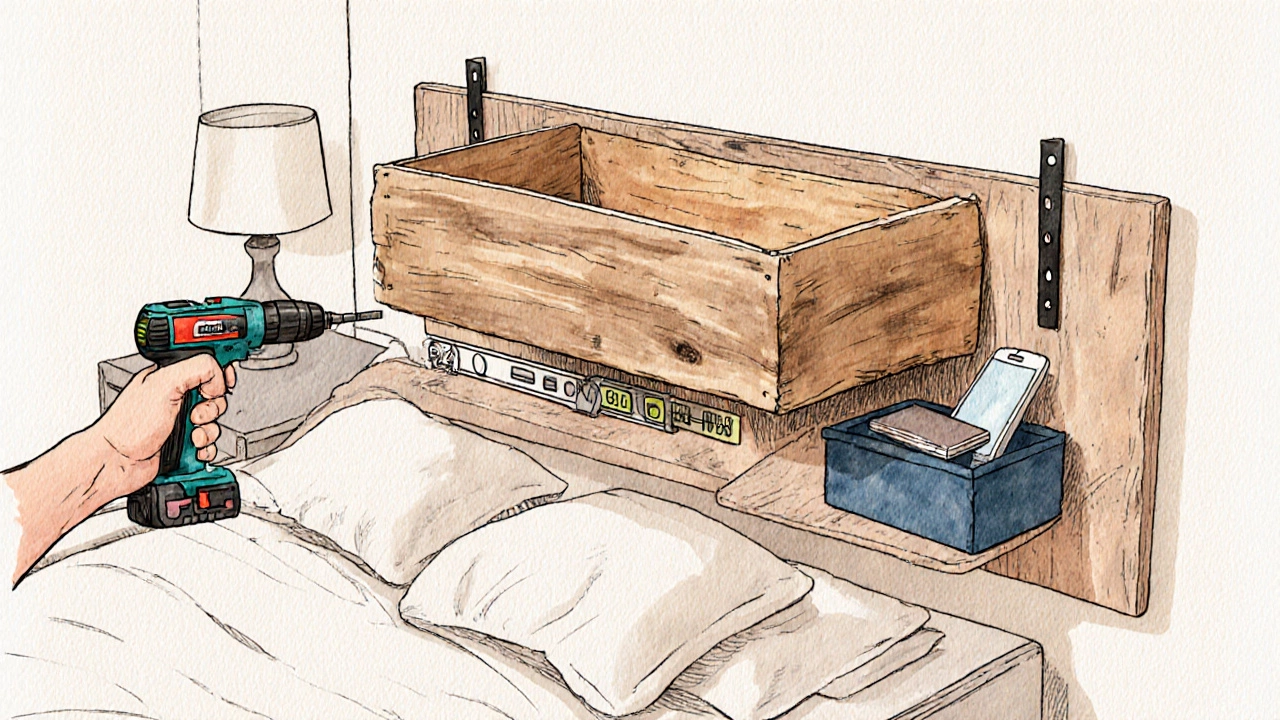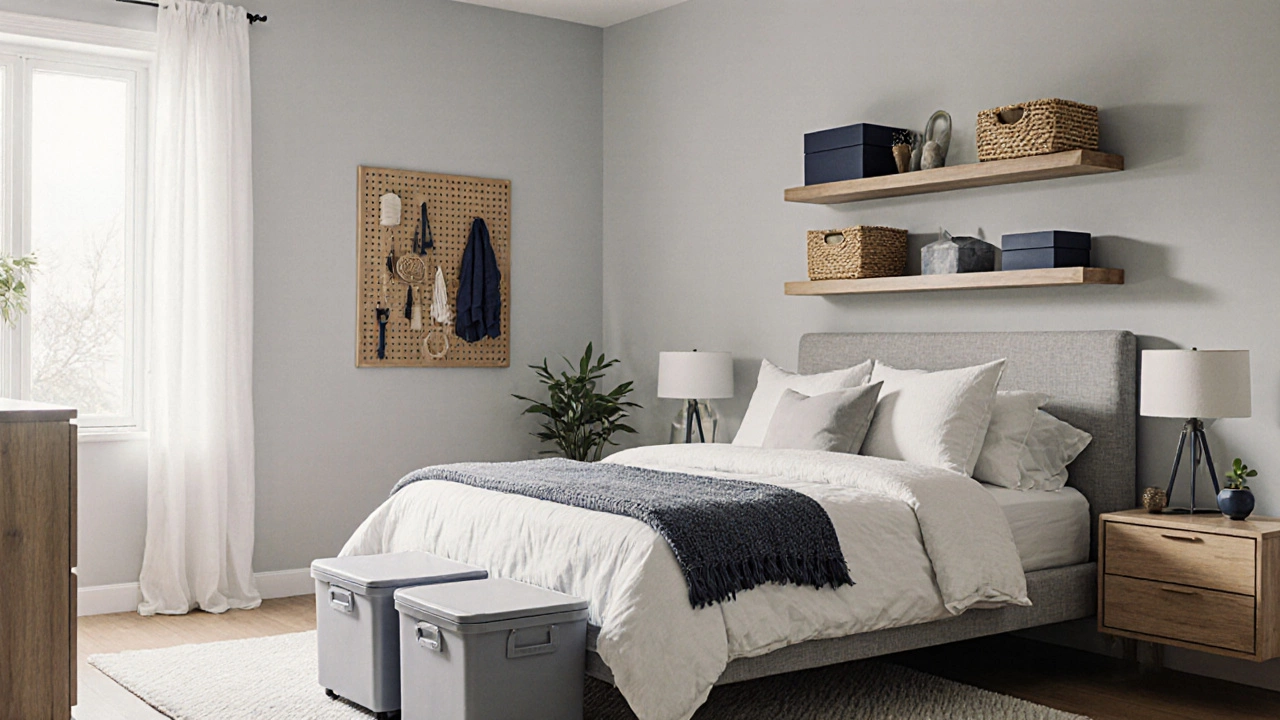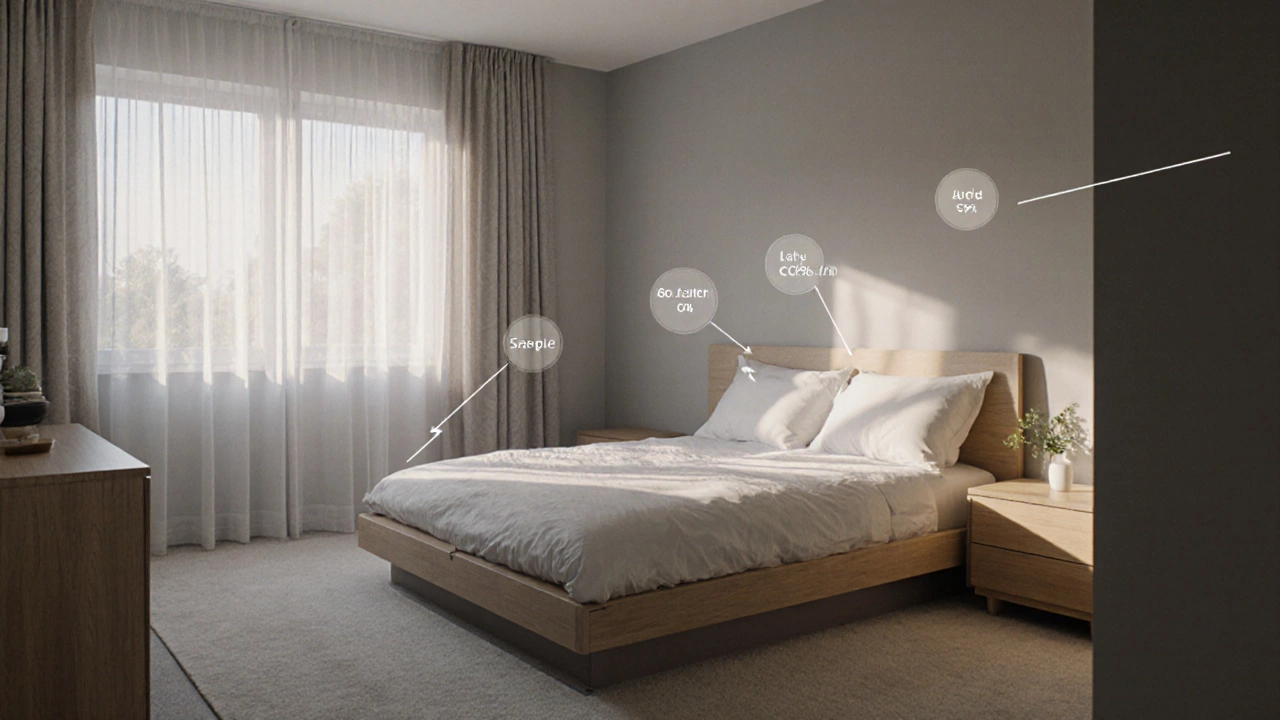Bedroom Dead Space Calculator
Identify Your Dead Spaces
Recommended Solutions
Dead space in bedroom is unused floor or wall area that could be turned into functional storage or decor. Most people notice an empty corner behind the bed, the gap under a low platform, or the high stretch of wall above a dresser and wonder how to make it useful without cluttering the room.
That feeling of wasted space is frustrating, especially when the bedroom already feels cramped. The good news? A handful of smart, inexpensive tweaks can transform those gaps into storage, style, or even extra seating. Below you’ll find a step‑by‑step guide, a quick checklist, and a comparison table to help you pick the right solution for your room.
1. Identify the Types of Dead Space in Your Room
Before you buy anything, walk around the bedroom with a notebook. Mark each of these common zones:
- Under‑bed void - the gap between the floor and the bed frame.
- Behind the headboard - often ignored because it feels hidden.
- Above tall furniture - the space that sits higher than a dresser or wardrobe.
- Empty corners - those awkward 90‑degree nooks.
- Unused wall height - especially in rooms with high ceilings.
Knowing where you have room to work will keep you from over‑loading an area that can’t support weight or access.
2. Choose the Right Solution for Each Zone
Below is a quick‑reference table that matches each dead‑space type with the most effective storage idea.
| Dead‑Space Type | Solution | Typical Cost (USD) | Installation Difficulty | Space Saved (sq ft) |
|---|---|---|---|---|
| Under‑bed void | Under‑bed storage | $30‑$120 | Easy - slides in | 2‑4 |
| Behind headboard | Floating nightstand | $40‑$150 | Medium - wall mounting | 1‑2 |
| Above tall furniture | Wall‑mounted shelves | $20‑$80 per shelf | Medium - drilling | 1‑3 |
| Empty corners | Corner pegboard | $15‑$45 | Easy - adhesive or screws | 0.5‑1.5 |
| Unused wall height | Headboard with storage | $70‑$250 | Medium - assembly | 2‑4 |
3. Step‑by‑Step DIY Projects
Pick one zone and follow the guide below. You can repeat the process for each area you identified.
Project A: Transforming the Under‑Bed Void
- Measure the height between the floor and the bed frame. Most low‑profile platforms leave 6‑9 inches.
- Choose a under‑bed storage container that fits-plastic bins with wheels work well for rolling out.
- If you need extra height, add bed risers (available in 2‑inch increments). Place the risers under each leg, then replace the frame.
- Label each bin (seasonal clothes, shoes, extra pillows) and store them neatly.
- Maintain by rotating items every season; this keeps the space from becoming a catch‑all.
Project B: Floating Nightstand Behind the Headboard
- Purchase a slim nightstand or a reclaimed wood box about 10‑12 inches wide.
- Locate studs behind the headboard using a stud finder. Mark drilling points 2 inches below the top of the headboard.
- Attach L‑brackets, then hang the nightstand. Ensure it’s level; a small bubble level helps.
- Use the top surface for a lamp, book, or phone charger-everything stays within arm’s reach without crowding the bedside.
Project C: Installing Wall‑Mounted Shelves Above a Dresser
- Pick floating shelves that match your decor (wood, metal, or acrylic).
- Measure the width of the dresser; choose a shelf length that aligns with it.Drill pilot holes into the wall studs, insert wall anchors if studs aren’t available.
- Secure the brackets, then slide the shelves onto them.
- Style with decorative boxes, folded blankets, or a small plant to keep the look airy.

4. Quick Checklist Before You Start
- ✅ Measure each dead‑space area precisely.
- ✅ Verify weight limits of walls and floor (especially for heavy shelves).
- ✅ Gather tools: stud finder, drill, level, screwdriver, measuring tape.
- ✅ Choose materials that match the room’s style (mid‑century, minimalist, rustic).
- ✅ Plan for future access - avoid storing items you’ll need frequently in hard‑to‑reach spots.
5. Common Mistakes & How to Avoid Them
Over‑loading shelves - Even sturdy‑looking brackets can bow if you pack too much weight. Stick to light décor, books in small stacks, or fabric baskets.
Skipping the stud finder - Drilling into drywall alone may cause shelves to pull out. Always anchor into studs or use heavy‑duty wall anchors.
Choosing the wrong height - If a shelf is too high, you’ll never use it. A good rule: keep most frequently accessed items below eye level (around 5‑6 feet).

6. Styling Tips to Keep the Room Cohesive
- Use a unified color palette for storage boxes (e.g., soft greys or muted navy) to make the added pieces feel built‑in.
- Incorporate vertical lines - tall narrow baskets enhance the sense of height.
- Mix texture: a woven basket, a sleek metal shelf, and a wooden box create visual interest without clutter.
- Leave at least 6 inches of breathing space around each item to avoid a cramped look.
7. Mini‑FAQ
What’s the best cheap way to use the space under a low platform bed?
Plastic rolling bins with built‑in handles are cheap, lightweight, and slide in/out easily. Pair them with low‑profile bed risers if you need a few extra inches.
Can I install floating shelves without drilling into studs?
Yes, use heavy‑duty toggle bolts or adhesive shelf systems designed for drywall. They hold lighter loads (books, décor) but avoid storing heavy items like electronics.
How much weight can a typical pegboard hold?
A standard 1/4‑inch thick pegboard can safely support up to 15 lb per hook when anchored to studs. For heavier gear, reinforce with a wooden backing.
Is a headboard with built‑in storage worth the extra cost?
If you have limited floor space, a headboard that hides books, chargers, or blankets can free up 2‑3 sq ft of usable area, making the investment worthwhile for small rooms.
What’s a good rule for choosing the height of a wall‑mounted shelf?
Place the shelf so the top edge is no higher than 5 ft 6 in for most adults. This keeps items reachable and reduces the risk of accidents.
With a bit of planning and the right pieces, you can turn every awkward nook into a functional part of your bedroom. No more wasted space, no more clutter-just a room that feels bigger, smarter, and more like home.
dead space bedroom doesn’t have to stay empty; it can become the secret weapon in your décor arsenal.
